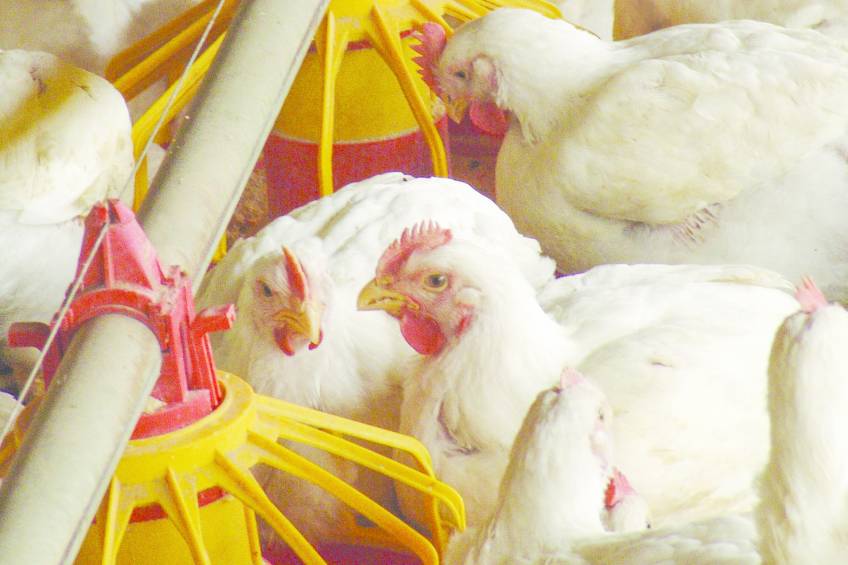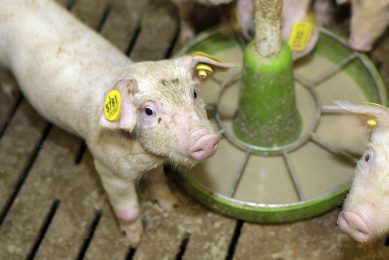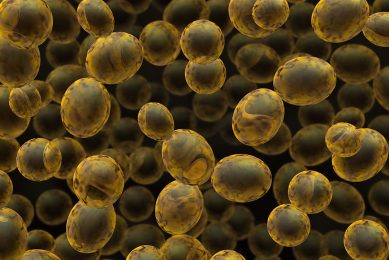Overcoming the vicious cycle of enteritis in broilers

Broilers and layers are highly productive animals. A good gut health, therefore, is important to enable the best efficiency of the feed. With restrictions in the use of antibiotics spreading across the sector, alternatives are being sought to stabilise the integrity of the gut and control the vicious cycle of enteritis.
Over the past decades, genetic selection has enabled the poultry sector to achieve heavier broilers at the slaughterhouse (2.8 kg at 42 days in 2013 vs. 1.7 kg in 1960). Birds have been selected for their capacity to grow, but also for a higher feed intake. At the same time, antibiotic growth promoters have been banned in Europe and brought into question in other regions of the world. Meat and bone meal is also less and less used. This evolution has had some consequences; even minor violations of the digestion and the absorption such as subclinical coccidiosis, cold or heat stress, drinking water quality, feed quality, etc, increase the quantity of nutrients available for opportunistic bacteria present in the gut, for instance Clostridium and E.coli. This can lead to the development of bacterial enteritis and/or to necrotic enteritis.
Figure 1 shows that the evolution of an enteritis is a sort of vicious cycle where each cause has an impact on the gut morphology and microbiology, which induces itself in another step in the vicious circle. If nothing is done, this will lead to an uncontrolled disorder, triggering eventually a necrotic enteritis.
Figure 1 – The vicious cycle of enteritis in broilers.

Which measures have to be taken?
Good farm management including drinking water quality, ventilation, a high level of biosecurity and high feed quality (presentation, feed transition and composition) are essential to prevent physiological disorders and to make the birds more resistant. This is phase 1 of the vicious cycle.
Alternatives to antibiotics are playing a growing role, and one reliable solution is the incorporation of the prebiotic Safmannan into the poultry feed. This product is the premium yeast parietal fraction, manufactured by Phileo Lesaffre Animal Care, and coming from the fermentation of a proprietary yeast strain (Saccharomyces cerevisiae), selected for its beneficial features on the gut health and the immune system of the birds. The fully controlled manufacturing process enables to get a consistent product in its balanced composition in mannans and β-glucans, and in its effect on the birds.
As 70% of the immune system capacity of the birds is concentrated around or inside the gut (Gut associated lymphoid tissue (GALT), peyer patches, spleen, liver, fabricius bursa), it is therefore easily understood that a good intestinal integrity will have a positive impact on the bird’s immune status. Several points have to be respected to maintain a good gut health. Firstly it is important to keep the absorption capacity of the gut. As can be seen in phases 3 and 4 of the vicious cycle preservation of the villi length is important.
Several trials have demonstrated the effect of the prebiotic in the preservation of the villi length in challenging conditions (Clostridium challenge for instance), and thus maintaining an optimal absorption of the feed nutrients (see Figure 2). By controlling the release of certain pro-inflammatory cytokines, the prebiotic enables to attenuate the effect of the intestinal inflammation, and thus preserves the villi length. Another effect is less deep crypts and a higher ratio villi length/crypt depth, which is a good parameter to measure for the gut health evaluation.
Figure 2 – Effect of yeast parietal fraction* in maintaining villi length in challenging conditions.
Protecting the gut cell wall
In phases 2 and 3 of the vicious cycle the gut cell wall has to be protected from pathogen attacks on the number of goblet cells and the mucus layer. A trial has shown the effect of Safmannan on the number of goblet cells, secreting the mucus which will protect the gut cell wall. Birds fed with the supplemented feed presented three times more goblets cells than those fed with a control feed (see Figure 3).
Figure 3 – Effect of yeast parietal fraction* in increasing the number of goblets cells and the thickness of the mucus layer in 23 day-old broilers.

In phase 2 of the vicious cycle it is important to decrease the pathogen pressure in the gut. Gram- bacteria have the ability to attach to the gut cell wall with specific antigens, the Fimbriae. These antigens bind to mannans covering the surface of the intestinal epithelium. As the product contains at least 20% of mannans, these bacteria bind preferably to the product, when put together in contact inside the gut. When Donaldson et al. used the product to demonstrate this mechanism, 98% of the Salmonella Typhimurium strain tested was bound by the product, and 62% of Clostridium perfringens. This last bacteria is a Gram+ bacteria with no Fimbriae. The mode of action for Gram+ bacteria is still to be elucidated but the fact remains that the product helps to decrease pathogen bacteria pressure in the gut and helps to limit their bad effects on gut health.
Oxidative stress is also an important disorder occurring during an enteritis during phase 3 of the vicious cycle. Selsaf, the selenium enriched yeast, also manufactured by Phileo Lesaffre Animal Care, provides a natural dual source of selenomethionine and selenocysteine. This second amino-acid is a direct component of the Gluthation peroxidase, one of the most important antioxidant enzymes. Thus, the product helps to control the negative impact of the oxidative stress.
There is no universal solution to warranty a good health for the broilers and layers. Depending on the circumstances, modifications in the farm management and a good observation of the birds will help to limit the predisposing factors and the different stress which can occur during a production period. As certain safeguards are put into question, like antibiotics, the products mentioned can be good alternatives to help the birds to grow in an optimal way.
References available on request












